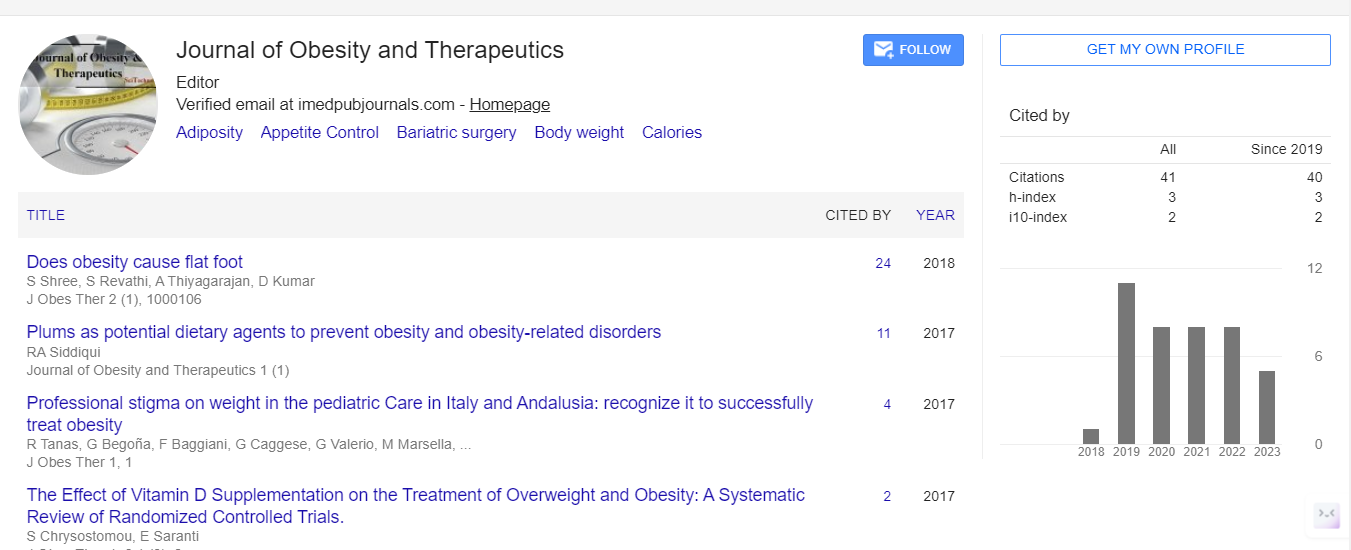Perspective, J Obes Ther Vol: 8 Issue: 1
Barriers and Facilitators in Implementing Evidence-Based Cholesterol Management Guidelines: A Primary Care Perspective
Marcio Koiti*
1Department of Cardiology, University Medical Center Utrecht, Utrecht University, Utrecht, The Netherlands
*Corresponding Author: Marcio Koiti,
Department of Cardiology, University
Medical Center Utrecht, Utrecht University, Utrecht, The Netherlands
E-mail: marciokoiti1@outlook.com
Received date: 04 March, 2024; Manuscript No. Jot-24-135818;
Editor assigned date: 06 March, 2024; Pre QC No. Jot-24-135818 (PQ);
Reviewed date: 21 March, 2024, QC No. Jot-24-135818;
Revised date: 28 March, 2024, Manuscript No: Jot-24-135818 (R);
Published date: 05 April, 2024, DOI:10.4172/jot.1000252.
Citation: Koiti M (2024) Barriers and Facilitators in Implementing Evidence-Based Cholesterol Management Guidelines: A Primary Care Perspective. J Obes Ther 8:1.
Description
Implementing evidence-based cholesterol management guidelines in primary care settings is crucial for improving patient outcomes and reducing the risk of cardiovascular diseases. This process is not without challenges, as several barriers and facilitators influence the successful integration of guidelines into routine clinical practice. By exploring these factors, healthcare providers can enhance guideline adherence and ultimately enhance patient care. This discussion delves into the barriers and facilitators in implementing evidence-based cholesterol management guidelines from a primary care perspective.
The intricate nature of cholesterol management guidelines can pose a significant challenge for primary care physicians. Guidelines may be lengthy, technical, and constantly evolving, making it difficult for providers to stay updated and adhere to the latest recommendations.
Primary care physicians often fetch multiple responsibilities within limited time frames. Integrating complex cholesterol management guidelines into already busy clinical workflows can be challenging and lead to guideline non-adherence.
Healthcare providers may exhibit resistance to change, especially if new guidelines conflict with established practices or beliefs. Overcoming this resistance and encouraging the adoption of evidencebased cholesterol management strategies requires effective change management initiatives.
Primary care settings may face resource constraints, including inadequate staffing, time, and financial resources. Limited access to educational materials, tools, or technologies necessary for guideline implementation can hinder effective cholesterol management.
Strong patient engagement and cooperation play a pivotal role in successful cholesterol management. Patients who are motivated to improve their lipid profiles and adhere to prescribed treatments can significantly enhance guideline implementation outcomes.
Provider training and education
Continuous training and education programs for primary care providers are essential facilitators for guideline implementation. Keeping healthcare professionals informed about the latest evidence-based practices and guidelines ensures they are wellequipped to deliver high-quality cholesterol management services.
Collaborative care models that involve various healthcare professionals, such as nurses, pharmacists, and dietitians, can facilitate the implementation of cholesterol management guidelines. By leveraging the expertise of multidisciplinary teams, primary care practices can enhance guideline adherence and patient outcomes.
Implementing health information technology solutions can streamline guideline implementation by providing decision support, electronic health record reminders, and patient education resources. HIT integration can mitigate some of the barriers associated with guideline complexity and time constraints.
Tailored educational interventions
Designing targeted educational programs that simplify guideline recommendations and offer practical tools for implementation can enhance provider knowledge and confidence in managing cholesterol. These interventions should be tailored to address specific barriers identified in primary care settings.
Implementing quality improvement strategies within primary care practices can standardize cholesterol management processes, monitor guideline adherence, and identify areas for enhancement. Continuous quality assessment and feedback mechanisms can drive practice improvements.
Emphasizing patient-centered care approaches that involve shared decision-making and individualized treatment plans can improve patient satisfaction, adherence, and health outcomes. Engaging patients in the decision-making process fosters a collaborative care environment.
In conclusion, understanding the barriers and facilitators in implementing evidence-based cholesterol management guidelines from a primary care perspective is essential for optimizing patient care. By addressing these factors through tailored strategies, provider education, and enhanced patient engagement, primary care practices can overcome challenges and enhance the delivery of guideline-concordant cholesterol management. Effective guideline implementation is pivotal in reducing cardiovascular risk, improving patient outcomes, and advancing the quality of care delivery in primary care settings.
 Spanish
Spanish  Chinese
Chinese  Russian
Russian  German
German  French
French  Japanese
Japanese  Portuguese
Portuguese  Hindi
Hindi 